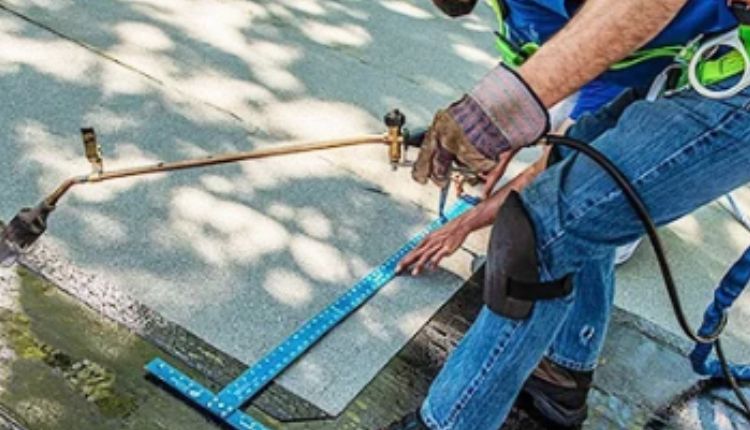
Roof
Flat roofs are a popular choice for commercial and residential properties due to their sleek design and cost-effectiveness. However, their unique structure comes with specific challenges that require specialized attention when repairs or restoration are needed. From drainage problems to membrane damage, understanding the complexities of flat roof maintenance can help property owners make informed decisions. For those seeking Columbus roof repair services, addressing these issues promptly is key to extending the life of their roof and protecting their investment.
Drainage Issues: Ensuring Proper Water Runoff
1. Installing or Repairing Drain Systems
Flat roofs often rely on internal drains, scuppers, or gutters to direct water off the roof. Over time, these systems can become clogged with debris, leading to water pooling on the roof’s surface. Regular inspections and timely repairs of drainage components are crucial to ensuring water flows freely and does not accumulate in vulnerable areas. Without a functional drainage system, flat roofs are at risk of severe water damage, which can compromise their structural integrity.
2. Adjusting Roof Slope
While flat roofs are nearly level, adding a slight slope can significantly improve water runoff. This is typically achieved during restoration by installing tapered insulation or similar materials to create a gradual incline. The adjusted slope directs water toward drainage points, reducing the likelihood of ponding. Although this process requires professional expertise, it’s a long-term solution that enhances both performance and durability.
3. Using Roof Crickets
Crickets are essential for diverting water away from obstacles such as chimneys, skylights, or HVAC units. These raised areas prevent water from accumulating around these features, where leaks are more likely to develop. Adding crickets during roof repairs or restoration ensures better drainage in problem spots and minimizes the risk of water damage. This solution is particularly beneficial for roofs with complex designs or multiple penetrations.
4. Regular Cleaning and Maintenance
Keeping drains and gutters free of debris is one of the simplest yet most effective ways to ensure proper water flow. Leaves, dirt, and other materials can easily block drainage systems, leading to standing water. Scheduling routine cleanings and inspections can prevent blockages and reduce the risk of water damage, especially during heavy rainfall. Property owners who neglect maintenance often face more costly repairs in the long run.
Membrane Damage: Repairing Punctures and Cracks
1. Identifying Damage Early
Regular inspections are essential for detecting punctures, cracks, or blisters in the membrane before they escalate into more significant problems. Damage to the membrane often allows water to seep through, leading to leaks and potential structural issues. By catching these problems early, property owners can avoid more extensive and expensive repairs. Professionals use specialized tools and techniques to identify damage that might not be visible to the untrained eye.
2. Patching Small Punctures
Small holes or tears in the membrane can be effectively patched using adhesives and materials compatible with the existing roofing system. This process restores the roof’s waterproofing capabilities without requiring a full replacement. Professional patching ensures that the repair blends seamlessly with the original membrane, maintaining the roof’s appearance and functionality. Patching is a cost-effective solution for addressing localized damage.
3. Replacing Damaged Sections
For more extensive damage, it may be necessary to replace sections of the membrane. This process involves removing the damaged area and installing new material that matches the existing roofing system. Replacing sections ensures that the roof remains watertight and structurally sound, even in cases of severe damage. While this option is more labor-intensive, it is essential for preserving the roof’s overall integrity.
Seam Repairs: Fixing Leaks at Material Joints
1. Applying Seam Tape
Seam tape is a reliable method for reinforcing weak or leaking joints. This adhesive material creates a durable, watertight barrier that prevents water from penetrating the seams. Proper application by a professional ensures the tape adheres securely and lasts for years. Seam tape is a cost-effective and efficient way to address leaks in vulnerable areas.
2. Using Seam Sealant
Sealants provide a flexible and waterproof solution for sealing seams, especially in areas prone to expansion and contraction due to temperature changes. These products fill gaps and cracks, creating a protective layer that resists weathering. Regular application of sealant can also serve as a preventative measure, reducing the likelihood of future leaks.
3. Rewelding Thermoplastic Membranes
For TPO or PVC roofing systems, rewelding seams with heat is an effective way to restore their integrity. This process involves using specialized equipment to re-melt the material, creating a strong bond between sections. Rewelding is particularly beneficial for repairing larger areas of damaged seams, ensuring a long-lasting fix.
Protective Coatings: Extending Lifespan with Reflective and Waterproof Coatings
1. Waterproofing
A waterproof coating seals minor cracks and imperfections, providing an additional barrier against water infiltration. This protective layer reduces the risk of leaks and extends the life of the roof. Coatings are particularly effective for aging roofs that may have developed small vulnerabilities over time.
2. Reflective Properties
Reflective coatings minimize heat absorption by reflecting sunlight, which helps lower indoor temperatures and reduces energy costs. In hot climates like Columbus, GA, this benefit is especially valuable for improving comfort and energy efficiency. By reducing the roof’s exposure to heat, reflective coatings also prevent material degradation.
3. UV Resistance
Flat roofs are exposed to intense sunlight, which can cause the roofing materials to degrade over time. UV-resistant coatings shield the surface from harmful rays, maintaining the roof’s structural integrity. This protection helps preserve the roof’s appearance and functionality for years.
Conclusion
Flat roof repair and restoration require specialized approaches to address their unique challenges, from drainage issues to membrane and seam damage. By implementing preventative measures and investing in high-quality repairs, property owners can extend the lifespan of their flat roofs while maintaining their functionality and appearance. Whether you’re dealing with minor repairs or considering a complete roof restoration, professional assistance is essential to ensure long-term success.






